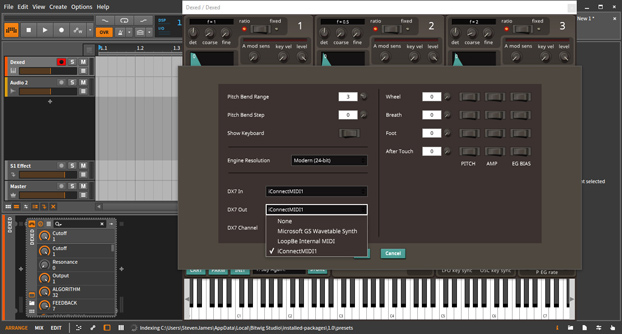

In other words, no biggie.ĭo all of these models have MIDI "CC implementation" charts so a person may use an outboard MIDI controller to tweak the patches? Perhaps by using a CV-to-MIDI module (such as the Doepfer A-192)? Could the TX81Z have pitch EG piped in from something like that? Or can I use something like a Beatstep as an external controller (when it is in controller mode)? To me the TX216 (really, any of the FM based Yamahas) is about like owning a Nord Micro Modular in that all of the programming is done on a PC computer and then the hardware saves the patches and does all of the DSP heavy lifting. So may I get some help on this? A bit of guidance? The TG500 has some really nice sounding synth brass/horns. But I've read that the TX81Z has no way to apply pitch envelope, which is a major bummer since I really like pitch EG. But on the other hand the TX216 and TG500 machines offer only sine waves, where the TX81Z also has other waveforms. But editing the TG500 looks to be difficult, and I cannot locate an editor (is there one?). The TG500 seems have a cost efficiency advantage over the ~DX7~ variants. Let’s hope that’s… not a short period of time, of course.I'm looking at a few of the Yamaha digi synths, namely the TG500, TX216 and the TX81Z. (Okay, there are other visual editors for Csound, but that’s still cool, and the editor is still available for Mac and Windows free from the original manufacturer, Clavia.)Īnd best of all, if you have patches you created on the Nord Modular, now they’ll work for all eternity – or, rather, at least as long as human civilization lasts and keeps making computers, as I’m pretty sure Csound will remain with us for that. And the graphical editor that lets you create Nord Modular patches just became a peculiar Nord-specific editor for Csound. The upshot: patches (including those you found on the Web) now work on any computer, Mac, Windows, Linux, and Linux machines like Raspberry Pi – for free.

They chose to simulate the behavior of the Nord Modular G2 synth itself, and translate its patch files into use as Csound – the powerful, elegant free software that has a lineage to the first computer synth. But I digress.)Īnyway, Gleb Rogozinsky, Mihail Chesnokov, and Eugene Cherny, all of St. That’s where I want my next sound studio, inside a decommissioned nuclear sub from the USSR, sort of Thomas Dolby meets Hunt for Red October. (It’s not the right image, but if you want to imagine something involving submarines, go for it. The work was published as an academic paper in Finland last June, authored by three Russian engineers – one of whom works on nuclear physics research, no less. You’d be forgiven for not knowing this happened. Now it gets a second lease on life, for free – with Csound. The Nord Modular G2 is one of electronic music’s most beloved departed pieces of gear.


 0 kommentar(er)
0 kommentar(er)
